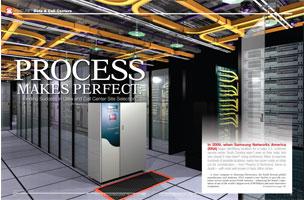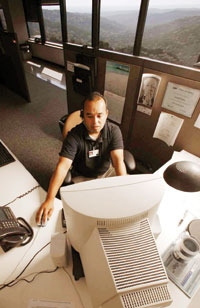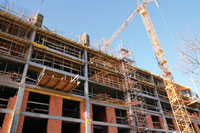
In 2009, when Samsung Networks America (SNA) began identifying locations for a major U.S. customer service center, South Carolina wasn’t even on their radar.
 And why should it have been? Using preliminary filters to examine hundreds of possible locations, nearly two dozen made an initial cut for consideration – from Phoenix to Richmond, Akron to Austin – with most well-known in back office circles.
And why should it have been? Using preliminary filters to examine hundreds of possible locations, nearly two dozen made an initial cut for consideration – from Phoenix to Richmond, Akron to Austin – with most well-known in back office circles.
A sister company to Samsung Electronics, the South Korean global manufacturer and marketer, SNA wanted a new facility to provide customer service needs across North America – enhancing the brand’s reputation of one of the world’s largest (over $100 billion) and most innovative companies.
Location filtering began in earnest.
The perfect site would be situated outside of known disaster zones; should offer extremely affordable labor (as a right to work state with low unionization); be south of the snow belt; and possess neutral to mild dialect, with reasonable access to bilingual talent.
The net grew tighter, the contenders fewer.
Additional filters included moderate cost of living; low cost of doing business; reasonable construction or building rental costs; and essential telecom infrastructure. The field narrowed, leaving only Austin, Texas, Richmond, Virginia, and darkhorse Greenville, South Carolina.
Austin boasted a Samsung presence, and a long-time SNA call center vendor facility. Richmond offered a quality labor market, Korean cultural exchange programs, and the presence of several key Samsung partners.
 Greenville, South Carolina, trumped them all with outstanding fiber optics and electricity at low cost and with appropriate redundancy, a highly qualified labor pool, a reputation as a dynamic and emerging city with outstanding international presence, and a record of significant economic growth. It also had shovel-ready sites along with available and expandable buildings. And it had a passion for SNA, as demonstrated by the Greenville Area Development Corporation and the South Carolina Department of Commerce.
Greenville, South Carolina, trumped them all with outstanding fiber optics and electricity at low cost and with appropriate redundancy, a highly qualified labor pool, a reputation as a dynamic and emerging city with outstanding international presence, and a record of significant economic growth. It also had shovel-ready sites along with available and expandable buildings. And it had a passion for SNA, as demonstrated by the Greenville Area Development Corporation and the South Carolina Department of Commerce.
The decision was cemented by an attractive package of county and state incentives that complemented South Carolina’s already-strong attraction to call center businesses. SNA would place its North American Customer Service Center in Greenville County, South Carolina, investing $20 million and adding over 1000 new jobs.
So it goes in site selection for data and call centers. Many factors are constant, others unique to each project. And an effective process employing filters can pave the way to success.
For data center site selection, searches often begin with the need for geographical diversity to ensure business continuity. A close second is a near-unlimited supply of reliable electricity.
When Microsoft and Yahoo announced plans in 2006 to construct huge data centers in rural Quincy, Washington, experts realized that abundant and inexpensive electricity were a must to compete for future facilities. Although servers have become increasingly efficient, such massive facilities easily consume 20 to 50 megawatts of electricity when fully operational – as much as 50 percent of the energy going to air conditioning and cooling.
"Computers are, for the most part, toaster ovens," said Janice Fetzer, then an executive with global data center operator Equinix, during a presentation before the Utility Economic Development Association. "The servers inside a typical data center produce tremendous amounts of heat."
With power costs in rural areas like Quincy a fraction of the cost of metros like Manhattan, many data center operators are moving to rural settings in states including Oregon, Virginia, Kansas, Nebraska and Minnesota. To lure facilities, states are accelerating time frames associated with permitting and power capacity generation. Utilities are examining partnerships to develop new solutions and offering lower rates.
Ultimately, finding the perfect site for data and call centers requires employing a rigorous process. The key to success is a methodology that identifies and meets all technical requirements of the project, while optimizing operations, minimizing costs and mitigating risk.
Siting Decisions More Complex than Ever
In today’s challenging global economy, there is no margin for error in making capital-intensive site selection decisions.
 “Every site selection decision is tremendously complex,” notes site selection consultant Tonya Crist, a principal at InSite Consulting, a site selection and economic development consulting firm based in South Carolina. “Only a rigorous and structured methodology can deliver the right answers and location, and it can have a huge bearing on an organization’s profitability, employees, capital resources, and attention of its management team.”
“Every site selection decision is tremendously complex,” notes site selection consultant Tonya Crist, a principal at InSite Consulting, a site selection and economic development consulting firm based in South Carolina. “Only a rigorous and structured methodology can deliver the right answers and location, and it can have a huge bearing on an organization’s profitability, employees, capital resources, and attention of its management team.”
Crist, a former executive in Fluor Corporation’s global site selection group, has spent two decades conducting dozens of site selection projects across North America and globally.
And while every site selection project varies based upon unique requirements, there are characteristics common to each, she notes.
“All siting projects require a filtering process to determine which sites will work from a technical perspective, to optimize operations and mitigate risk,” said Crist. “Then you examine what works from a financial perspective to produce an appropriate return on investment, and layer on strategic and qualitative factors. Lastly, you should evaluate and negotiate incentives with finalist markets to emerge with the very best location.”
Beginning the Site Selection Process
With new construction for large-enterprise data centers estimated at nearly $6 billion in 2010 and expected to double by 2015, such explosive growth – and investment – places its own set of pressures on siting.
With top tier data centers offering power availability 99.9999% of the time — or total outage of less than 32 seconds per year – reliability and redundancy is essential. Also unusual to this industry is the importance of the contractor and the engineering team being engaged from the start to ensure all requirements are planned for.
 Gaining buy-in and participation from stakeholders often drives organizations to hire site selection consultants to help identify factors that influence selection. While an exhaustive methodology may seem challenging, Crist notes that “the methodology is exhaustive for good reason. It allows all parties involved to have input, creates ownership of the final decision, and establishes quantifiable criteria for the ultimate location decision.”
Gaining buy-in and participation from stakeholders often drives organizations to hire site selection consultants to help identify factors that influence selection. While an exhaustive methodology may seem challenging, Crist notes that “the methodology is exhaustive for good reason. It allows all parties involved to have input, creates ownership of the final decision, and establishes quantifiable criteria for the ultimate location decision.”
Whether working with call centers or data centers, experts agree that a long-range perspective is essential. Focusing a process to achieve short-term goals can lead to bad decisions – plus damaged careers, community unhappiness, and lots of added cost for companies and shareholders.
A Four-Phase Process
Executing a successful site selection assignment is an intense and multi-dimensional process marked by four phases: Alignment, Screening, Evaluation and Selection. The complexity and time each phase takes depends on the center to be built. Whereas call center site selection may emphasize labor supply and skill, data centers may be driven by power access, community readiness and speed to occupancy. Determining the unique needs of each project is addressed in Alignment.
Phase I – Aligning the Team
To kick off the project, begin with an alignment meeting of the entire team. Your team should include representatives from all business areas -- government affairs, HR, real estate, finance, legal, tax, operations, technology – and the executive suite. Encourage sharing of each member’s point of view, and use their insights to move to consensus.
In the alignment phase, make sure to address:
An overview of the company and operations
Specific goals and success factors of the project
Critical location factors (must-haves and want-to-haves)
Search region guidelines
Team members and responsibilities
A project schedule including milestone dates
Site requirements vary widely. Some projects are exceptionally capital intensive -- Amazon.com’s 116,000 square foot data center in Oregon cost a reported $100 million. Many call centers are far less expensive but present unique challenges like specialized labor or multilingual requirements. Most require easy access, and reliable and plentiful electricity; some are driven by proximity to customers or suppliers. Successful alignment unearths all of these issues.
In establishing success factors, address your unique issues like:
Plentiful, reliable and cost-efficient sources of power
Fiber optic access and bandwidth capacity
A plentiful workforce with training options and reasonable wages
Ease of permitting and regulatory procedures
Road networks and airport access
Proximity to your needed talent pool
Market prevalence of competitive centers
State and local tax abatements available
Flexible state and local incentives applicable to you
Union activity and right-to-work considerations
Cost of living and cost of doing business
Gaining consensus during the alignment phase inevitably results in a more efficient process moving forward.
Phase II – Screening Potential Sites As evidenced by SNA earlier, a second phase is identifying and screening candidate sites. Based upon inputs established during alignment, the team can efficiently identify and evaluate regions of interest in which to potentially locate a facility.
As evidenced by SNA earlier, a second phase is identifying and screening candidate sites. Based upon inputs established during alignment, the team can efficiently identify and evaluate regions of interest in which to potentially locate a facility.
Deploying advanced research tools including GIS mapping, weighted modeling, saturation analysis, and logistical and demographic assessment, filtering quickly eliminates areas that don’t meet essential criteria.
“You have to examine and evaluate every issue and number that impacts a siting decision, and use this phase to eliminate non-compliant locations methodically,” says Crist. “It is complex and analytical, but the objective is to reduce the universe of sites to a limited number of areas to evaluate in great detail.”
Phase III –Evaluating Sites
With a smaller universe of potential site locations identified, the selection process should add a second filtering stage -- a rigorous evaluation of detailed information provided by areas still under consideration.
 Site selection professionals will typically conduct desktop analysis of potential sites and key attributes, interview representatives of locations under consideration, evaluate comparable organizations in the market, and analyze specific physical locations that meet baseline criteria for consideration, arriving at a few “candidate locations.”
Site selection professionals will typically conduct desktop analysis of potential sites and key attributes, interview representatives of locations under consideration, evaluate comparable organizations in the market, and analyze specific physical locations that meet baseline criteria for consideration, arriving at a few “candidate locations.”
A designated team should conduct onsite visits to candidate locations, assessing operating parameters (labor, utilities, costs, training facilities, peer companies, key suppliers), physical conditions (property, infrastructure, topography, transportation access), and community conditions (community leadership, educational facilities, quality of life, business environment). Face-to-face discussions should be conducted with community, utility and regulatory officials. Sites should be inspected and information verified, with further elimination of candidate locations following.
Many times, a second round of visits to this short list of locations follows, with each property or community under consideration receiving a detailed evaluation. Discussions regarding incentives available to the project occur here, resulting in an initial ranking of “finalist locations.”
Phase IV –Site Selection
Final property investigations, incentive negotiations and preparation of detailed financial models mark the concluding phase as the company identifies a preferred location.
At this stage, real estate, utility and incentive packages are hammered out, designed to maximize return to the company and reflect economic and business conditions present at the time – yet always with an eye towards the long-term impact on the organization.
At this point, incentives can become siting discriminators as both one-time and recurring costs are analyzed. With siting costs driven by many factors – utilities, power, site-ready land, talent pool, competitive set, taxes and more – incentives that lower the cost of doing business or mitigate risk become significant. Environmental and political considerations are weighed, and the true value of incentives and credits assessed.
Be sure that the community embraces you as a welcome neighbor. Once the preferred location is identified and signed off on by management, conclude the process with a memorandum of understanding with key entities, inking related real estate transactions, and conducting a public announcement of your decision.
A Final Word When all is said and done, and every bit of available information has been analyzed in pursuit of the right decision, it is ultimately the company who will live with the site decision. When a good decision is made, everyone wins – company, community and consumer.
When all is said and done, and every bit of available information has been analyzed in pursuit of the right decision, it is ultimately the company who will live with the site decision. When a good decision is made, everyone wins – company, community and consumer.
An effective process makes the difference. Be diligent, be methodical, be detailed and be thorough. While not easy, your process ultimately will help you make an intelligent, defensible and well-considered decision.

